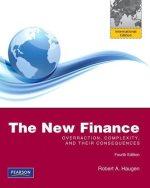Question
Prepare the financial ratios for J.C. Penney Company, Inc. (JCP) for the years indicated. Calculate the required financial ratios and reference them in your analysis.
Prepare the financial ratios for J.C. Penney Company, Inc. (JCP) for the years indicated. Calculate the required financial ratios and reference them in your analysis. Including the following:
Prepare the financial ratios for the calendar years of 2011, 2012, and 2013. Use the JCP financial documents (balance sheets and income statements) linked in the Resources.
Comment on the differences between J.C. Penney's ratios and the industry averages.
Determine the trends evident in the financial statements.
| Calendar Year | 2011 | 2012 | 2013 | ||
| Liabilities | |||||
| Short-term debt | $ 231 | $ 673 | |||
| Capital leases | $ 26 | $ 27 | |||
| Accounts payable | $ 1,022 | $ 1,162 | $ 948 | ||
| Taxes payable | $ 111 | $ 91 | |||
| Accrued liabilities | $ 1,038 | $ 1,107 | |||
| Other current liabilities | $ 354 | $ 1,395 | |||
| Total current liabilities | $ 2,756 | $ 2,583 | $ 2,846 | ||
| Non-current liabilities | |||||
| Long-term debt | $ 2,871 | $ 2,956 | $ 4,839 | ||
| Capital leases | $ 62 | ||||
| Deferred taxes liabilities | $ 888 | $ 388 | $ 335 | ||
| Pensions and other benefits | $ 187 | ||||
| Other long-term liabilities | $ 899 | $ 683 | $ 445 | ||
| Total non-current liabilities | $ 4,658 | $ 4,027 | $ 5,868 | ||
| Total liabilities | $ 7,414 | $ 6,610 | $ 8,714 | ||
| Stockholders' equity | |||||
| Common stock | $ 108 | $ 110 | $ 152 | ||
| Additional paid-in capital | $ 3,699 | $ 3,799 | $ 4,571 | ||
| Retained earnings | $ 1,412 | $ 380 | $ (1,008) | ||
| Accumulated other comprehensive income | $ (1,209) | $ (1,118) | $ (628) | ||
| Total stockholders' equity | $ 4,010 | $ 3,171 | $ 3,087 | ||
| Total liabilities and stockholders' equity | $ 11,424 | $ 9,781 | $ | ||
| JC PENNEY CO INC (JCP) | |||||
| BALANCE SHEETS | |||||
| All amounts in USD millions. | no data | no data | no data | ||
| Calendar Year | 2011 | 2012 | 2013 | ||
| Assets | no data | no data | no data | ||
| Cash and cash equivalents | $ 175 | $ 121 | $ 113 | ||
| Short-term investments | $ 1,332 | $ 809 | $ 1,402 | ||
| Total cash | $ 1,507 | $ 930 | $ 1,515 | ||
| Receivables | $ 413 | $ 57 | $ 4 | ||
| Inventories | $ 2,916 | $ 2,341 | $ 2,935 | ||
| Deferred income taxes | $ 106 | $ 193 | |||
| Prepaid expenses | $ 245 | $ 249 | $ 186 | ||
| Total current assets | $ 5,081 | $ 3,683 | $ 4,833 | ||
| Non-current assets | no data | no data | |||
| Property, plant and equipment | no data | no data | no data | ||
| Land | $ 312 | $ 310 | $ 309 | ||
| Fixtures and equipment | $ 2,173 | $ 2,132 | $ 2,356 | ||
| Other properties | $ 5,656 | $ 5,791 | $ 6,269 | ||
| Property and equipment, at cost | $ 8,141 | $ 8,233 | $ 8,934 | ||
| Accumulated depreciation | $ (2,965) | $ (2,880) | $ (3,315) | ||
| Property, plant and equipment, net | $ 5,176 | $ 5,353 | $ 5,619 | ||
| Intangible assets | n no | no data | $ 535 | ||
| Prepaid pension costs | no data | no data | $ 663 | ||
| Other long-term assets | $ 1,167 | $ 745 | $ 151 | ||
| Total non-current assets | $ 6,343 | $ 6,098 | $ 6,968 | ||
| Total assets | $ 11,424 | $ 9,781 | $ 11,801 | ||
Step by Step Solution
There are 3 Steps involved in it
Step: 1

Get Instant Access to Expert-Tailored Solutions
See step-by-step solutions with expert insights and AI powered tools for academic success
Step: 2

Step: 3

Ace Your Homework with AI
Get the answers you need in no time with our AI-driven, step-by-step assistance
Get Started


